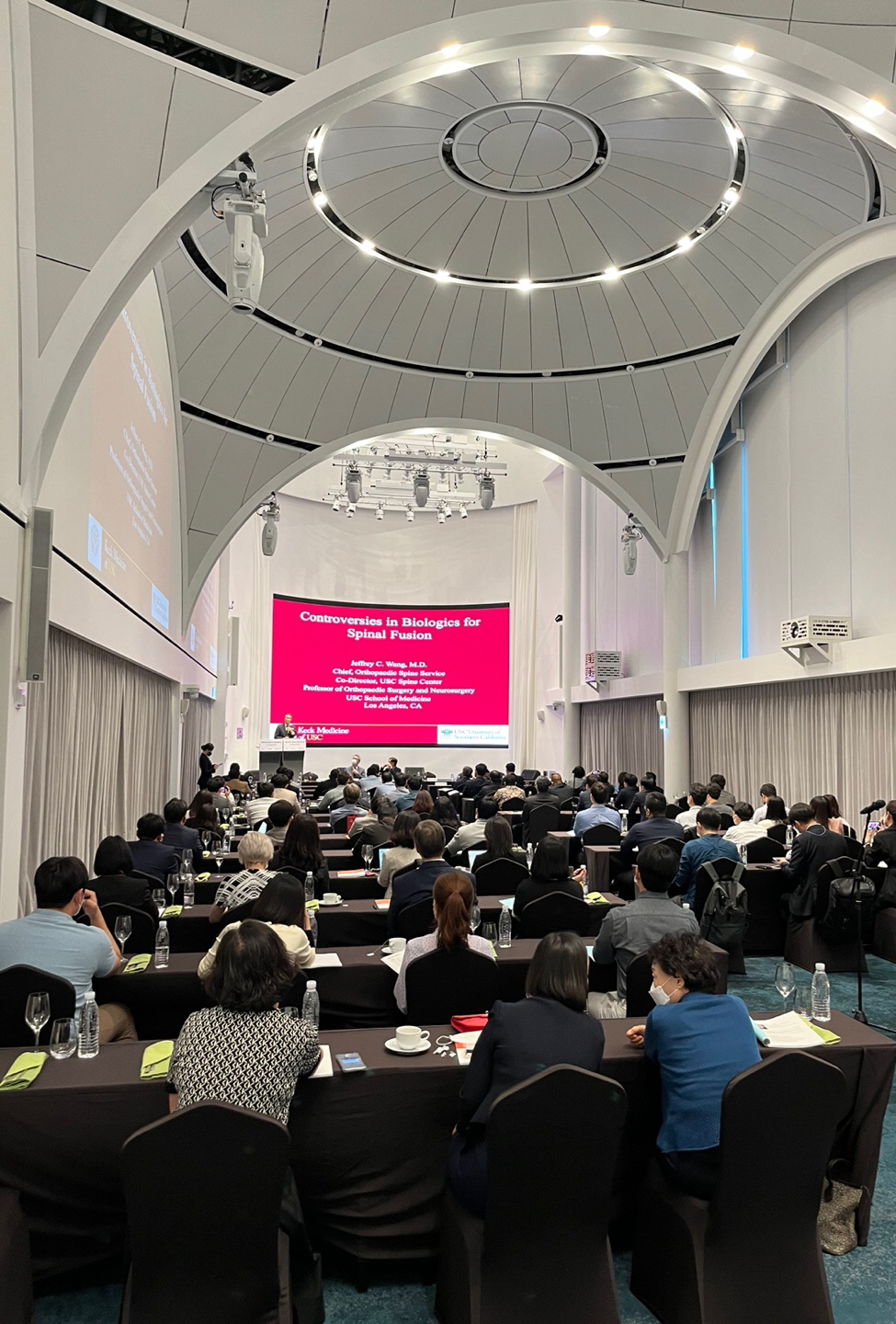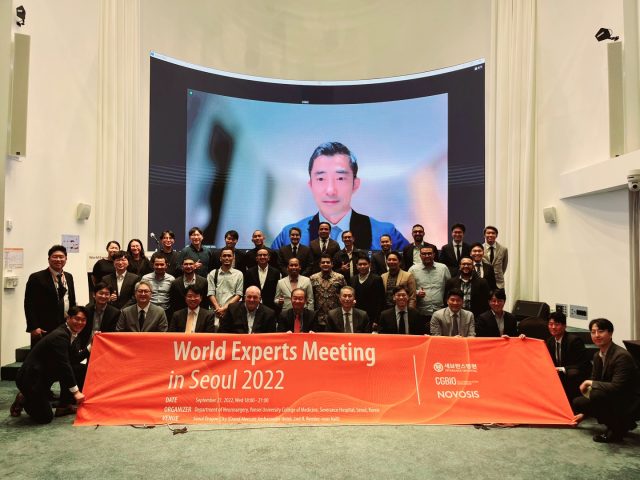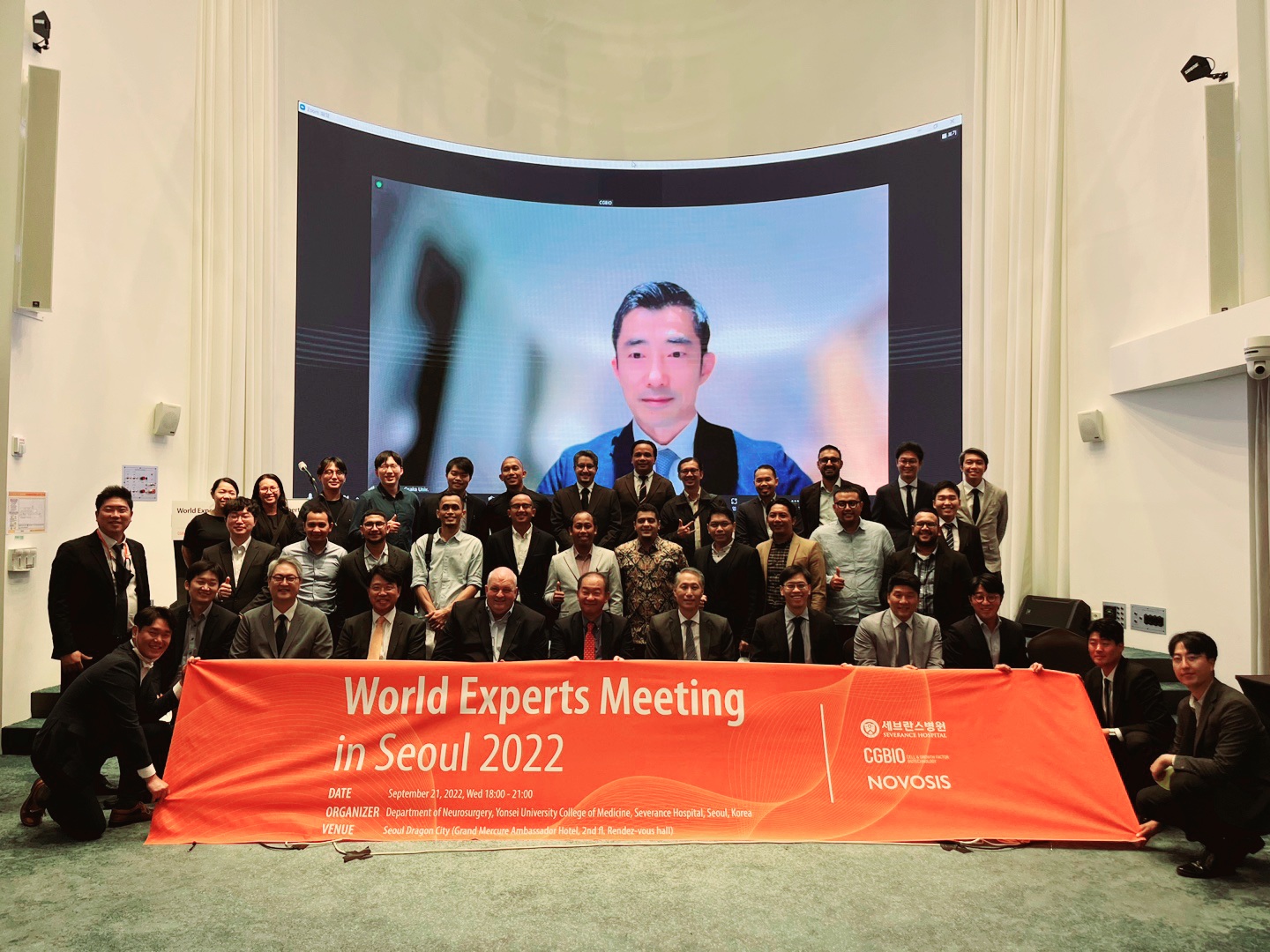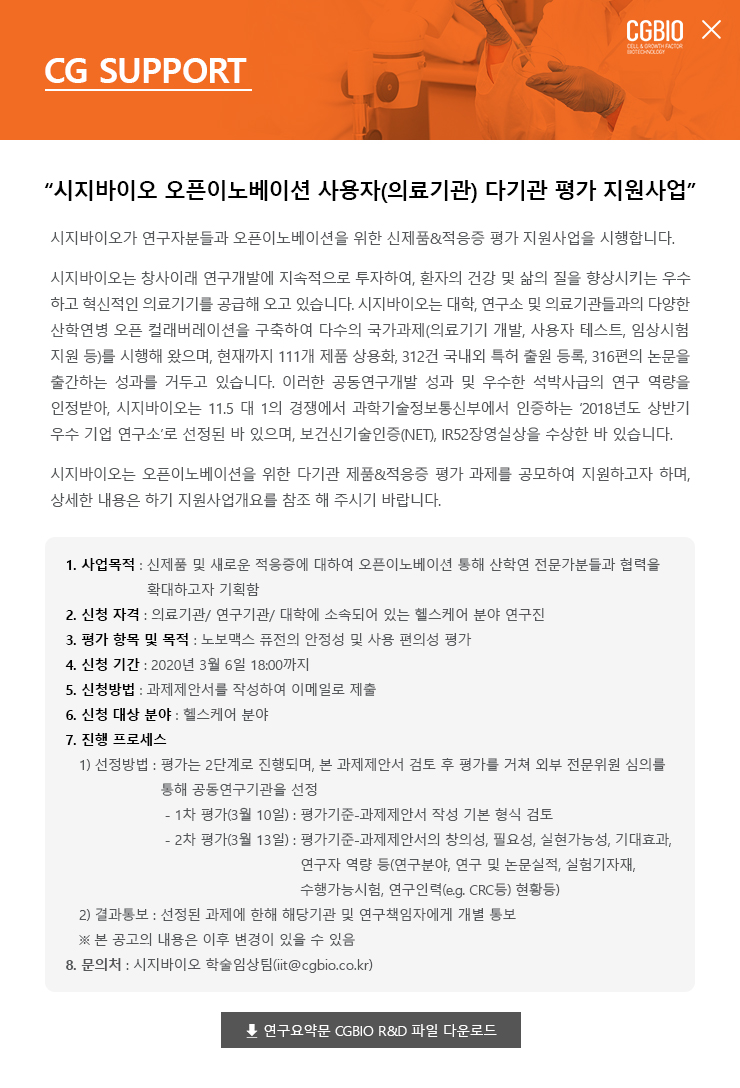CGBIO (Representative Director Hyun Seung Yu), a company specializing in bio-regenerative medicine, announced on the 21st that it had successfully completed the ‘World Experts Meeting in Seoul 2022’, a Novosis global symposium for spinal surgery specialists from around the world.
CGBIO, which recently signed a license-out and finished product supply contract with Orthofix, a global medical device company in the United States. It announced entry into the North American market of Novosis, a bone substitute developed by themselves, demonstrating the excellence of Novosis to spinal surgery specialists around the world and had an opportunity to publicize and confirm once again that they had taken a big step toward entering the global market.
At the World Expert Meeting hosted by CGBIO, the knowledge and opinion of the latest treatment for posterior lumbar interbody fusion (PLIF) using a bone substitute material, case studies for actual clinical application of Novosis, a bone morphogenetic protein (rhBMP-2) convergence bone substitute material, and preclinical study results of Novosis Putty, a next-generation product, were presented.
About 100 specialists participated in the event, ▲Jeffrey Wang, professor of orthopedics and neurosurgery professor of Keck School of Medicine of USC (Controversies in Biologics for Spinal Fusion), ▲Christopher I. Shaffrey, professor of Duke University Hospital (Pelvic Fixation: Techniques, Complications & Failures) ▲Takashi Kaito, professor of Osaka University Hospital (Role of Drug Delivery Vehicles in BMP-based Bone Regeneration) ▲Dong Ah Shin, professor of Severance Hospital (The Efficacy and Safety of E.BMP 2 for Lumbar Interbody Fusion), and other medical staff gave presentations.

▲‘World Experts Meeting in seoul 2022’
After the presentation, along with the latest knowledge and opinion on bone union using autogenous bone and bone substitute material and bone substitute material, a discussion centered on the case of the successful bone union using bone morphogenetic protein (rhBMP-2)was arranged.
The speakers who attended the discussion agreed on the importance of the carrier material, which plays a role in delivering bone morphogenetic proteins, among the components of bone substitute materials. In particular, Professor Takashi Kaito said, “Novosis Putty replaces the collagen sponge material, which is the carrier material which is products of other company on the market, with bio-ceramic material, helping to regenerate bones more efficiently and safely than collagen sponge materials.”
In addition, at the event, the clinical research results of Professor Dong Ah Shin of Severance Hospital were also announced. As a result of a retrospective analysis of patients who administered Novosis during treatment of the posterior lumbar interbody fusion (PLIF), the X-ray and CT scans showed significantly higher rates of bone union in the Novosis-applied group than the control group, the autologous local bone-applied group. Adverse events such as osteolysis, subsidence, and screw loosening also occurred less in the Novosis application group.
CGBIO also held the Novosis global seminar ‘Meet the Master’ for local specialists in Thailand and Singapore the last July and August, respectively. About 100 medical staff from various Asian countries, including Korea, Thailand, Vietnam, Indonesia, and the Philippines, attended the event and agreed on the need for ideal next-generation bone substitutes by sharing the global speakers’ use cases of bone substitutes.
Hyun Seung Yu, representative director of CGBIO, said, “CGBIO will continue to hold symposiums targeting medical staff in the future to increase the medical staff’s understanding of bone substitutes and support them to provide higher-level medical care, continuing to provide social value to many patients.”



